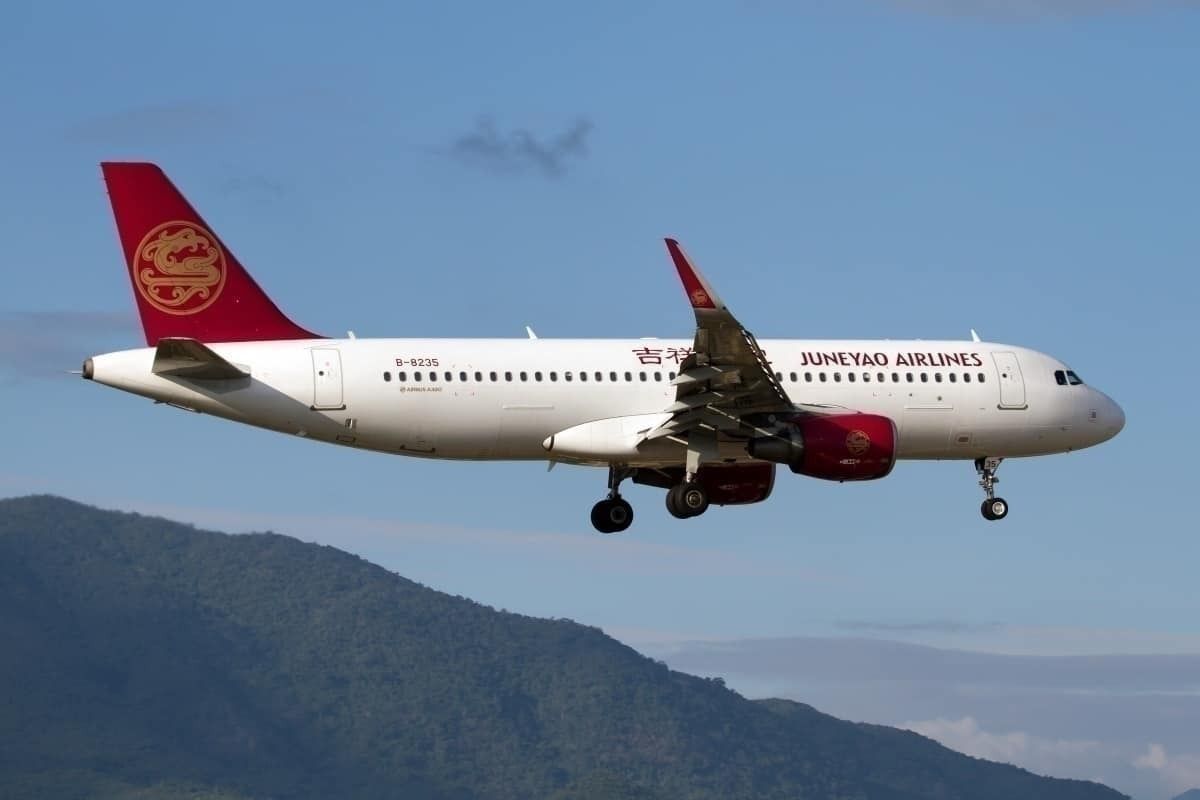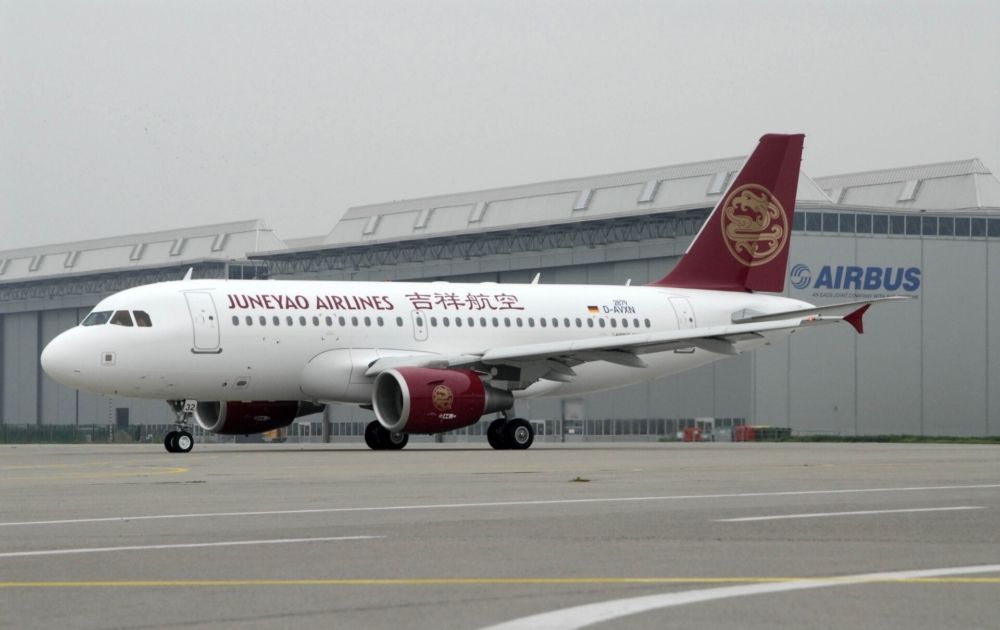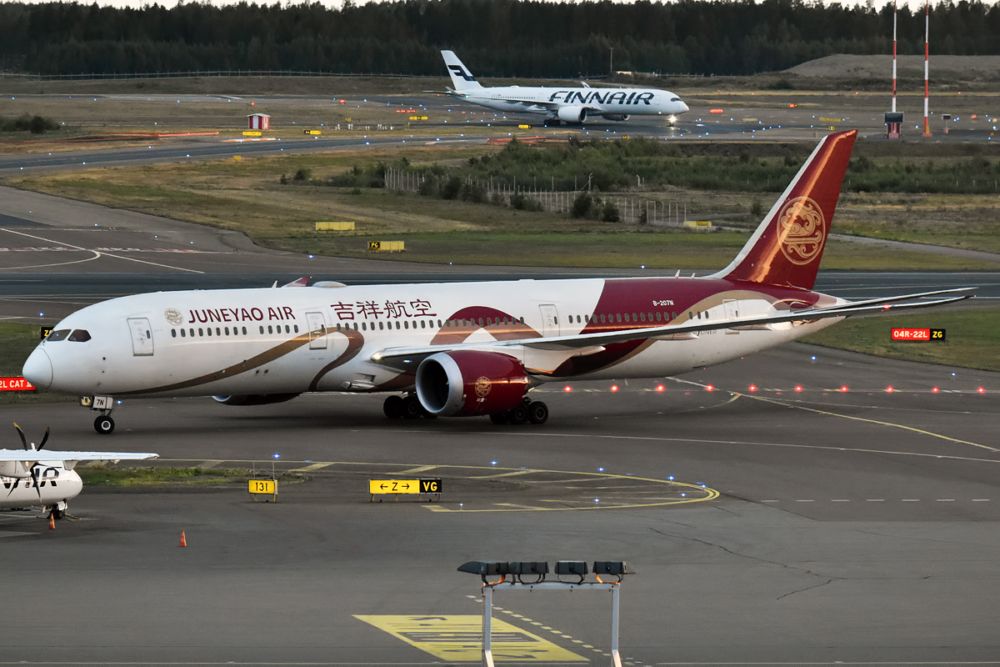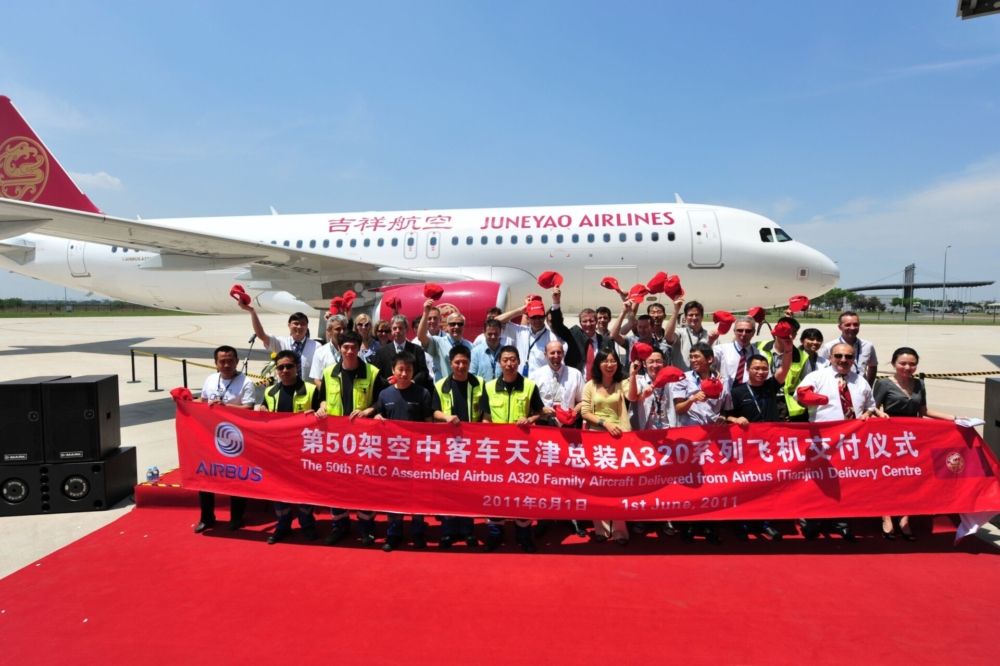Established in 2005, Juneyao Air has successfully carved a space for itself in the highly aggressive and competitive Chinese aviation market. The full-service carrier is a subsidiary company of the Shanghai Juneyao Group and operates most of its flights from its two main hubs at Shanghai Pudong and Shanghai Hongqiao airports. While the Airbus A320 family of airplanes dominates the carrier’s fleet, Juneyao has acquired the Boeing Dreamliners for its long-haul ambitions.
Juneyao Air (previously known as Juneyao Airlines) started operations in September 2006 and within seven years had expanded its fleet to 35 brand-new A320s and its network to over 50 cities. Not satisfied with domestic and short-haul international flights, the carrier entered the long-haul market with flights to Europe, including Helsinki and Athens.
To further consolidate its position in the Chinese skies, Juneyao entered the LCC territory in 2014 with its subsidiary airline 9 Air, based in Guangzhou, southern China. As the airline grew its influence, it became the launch member of Star Alliance’s Connecting Partner Model in 2017. In 2020, it announced a partnership with China Eastern Airlines to start a new Hainan-based airline, the COVID pandemic notwithstanding.
Stay informed: Sign up for our daily and weekly aviation news digests.
Spreading roots in China
Around 2004, the Civil Aviation Administration of China (CAAC) was opening up the Chinese aviation space to private players and foreign investments. As a result, between 2004 and 2007, 14 airlines sprouted in the country, one of them being Juneyao Airlines.
Juneyao positioned itself as a full-service airline with Shanghai as its central hub and pursued medium to high-level business and leisure travelers. Even though some of its routes overlapped with high-speed rail and another Shanghai-based carrier – LCC Spring Airlines – Juneyao managed to build an impressive domestic network successfully.
Spring Airlines withdrew some of its overlapping routes, but Juneyao plowed ahead and connected Shanghai with provincial capital cities on longer trunk routes and regional cities in central China on medium to short routes. This strategy really helped Juneyao to grow as an airline over the years.
Airbus for short-haul, Boeing for long
The carrier’s fleet remains heavily lopsided in Airbus’ favor. Juneyao relies on the A320 family of aircraft for most of its cross-country and short-haul international flights. Like many A320 operators, Juneyao also added the Neo versions to its fleet, acquiring its first A320neo in December 2019 and the first A321neo almost a year later.
In 2018, the carrier pivoted from its all-Airbus model and took delivery of its first Boeing 787-9 Dreamliner. This was the first out of the firm order of five Dreamliners placed by the carrier with an option of another five.
Juneyao operates a fairly young fleet of airplanes with an average age of just 5.8 years. According to ch-aviation, the carrier has 85 aircraft, of which 79 belong to the A320 family and the remaining six are the Dreamliners.
Expansion
In the last few years, Juneyao has embarked on an expansion mode in various directions. As far as new routes are concerned, the carrier launched its first long-haul flight to Helsinki in 2018, followed by another European destination, Athens, in 2019. There were even firm plans of fifth freedom flights to Dublin, Manchester, and Reykjavik via Helsinki, but they got postponed due to the global pandemic.
Juneyao also branched out into the LCC market in 2014 with its subsidiary airline, 9 Air, based in Guangzhou and owns more than 90% share in the company. Even as the pandemic decimated the aviation world, in June 2020, Juneyao announced another airline based in the Hainan province, in partnership with China Eastern Airlines. However, the CAAC is yet to give consent to the project.
From joining Star Alliance as the launch member of its Connecting Partner Model in 2017 to expanding its base to Beijing Daxing International Airport in 2019, Juneyao is busy leaving its footprints behind across the aviation space.
Here at Simple Flying, we’ll be sure to report on the carrier’s next significant move, if and when that happens.




